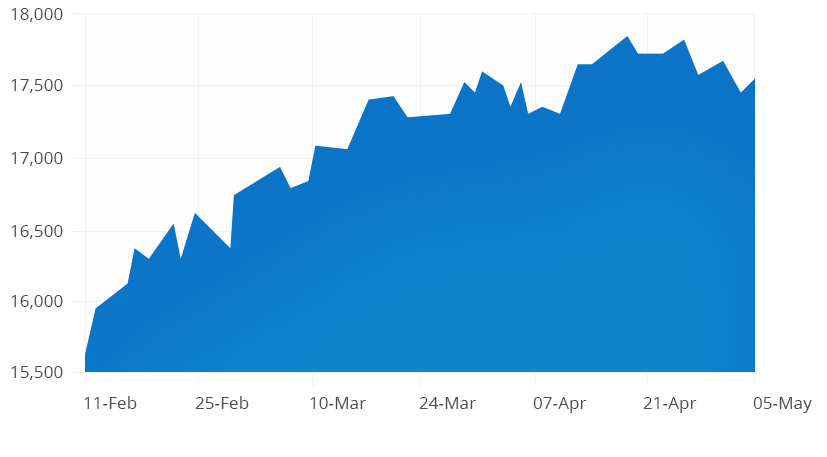Top 5 Economic Reports That Can Affect Mortgage Rates

Top 5 Economic Reports That Can Affect Mortgage Rates
Have you ever wondered how and why mortgage lenders adjust their mortgage rates their borrowers can choose from each day? One would think it’s a lot of work to make a daily rate change, right? I mean, why doesn’t a lender just post a rate and let it stay that way for a few days? Truth is, economic reports have a big impact on mortgage rates.
As a matter of fact, it does take some work and mortgage companies and banks alike have divisions within their organizations that do nothing but set interest rates and follow market trends. These divisions are referred to as the Secondary Department and perform specific duties outside the boundaries of bringing in a new loan application and sending it through the approval process.
Mortgage Rate Primer
Mortgage rates are all tied to a respective index. Mortgage companies follow these indexes intensely throughout the course of a business day with an eye toward future market movements. Let’s take the most common mortgage program, the conforming 30-year fixed-rate loan. This loan stretches the monthly payments out over 30 years and in doing so lowers the required monthly payment compared to a shorter-term loan, such as maybe a 15-year fixed term. This lower payment means the applicants can qualify for a larger loan amount.
Each morning, the secondary department watches a specific index. A common index most lenders use is actually a bond, more specifically a mortgage bond. The most common of this group of bonds is listed as the FNMA 30-yr 4.0 bond. Investors can buy a mortgage bond, and any bond for that matter, and receive a specific return on that investment over a designated time period. Investors however don’t buy bonds to cash in on big profits down the road. Bonds have relatively low yields compared to the potential return of a healthy stock or mutual fund. The bond isn’t part of an investor’s portfolio for a specific return but more importantly, a bond is a flight to safety. The investor’s expected return won’t change based upon the whims of the market.
Investors allocate their funds based upon a number of factors and market expectations. If the investor feels the economy is really starting to roll, the investor will allocate more funds into stocks and pull money out of low-yielding bonds. It’s a bet on the future but a bet made by analyzing recent trends and economic data. Each month various agencies report on different aspects of the economy and after reviewing each and every report, the investor will be told how the economy has recently performed and make a prediction on where the market is headed, allocating investment funds accordingly.
Conversely, if a particular economic report is released and is somewhat gloomy or even tepid at best, the investor might want to pull some funds out of the stock market until a better handle on the current and future economy can be had. A bad economy typically means investors flee stocks and into the safety of bonds and in a robust economy, the reverse occurs.
All that said, what are the five most important economic reports that can impact mortgage rates?
Top 5 Economic Reports
Unemployment Report. On the first business Friday of each month, the Census Bureau releases the unemployment report for the previous month. The unemployment report contains quite a bit of data but the headline numbers is always the actual unemployment rate. That’s what the news stories will report, whether or not the unemployment rate went up, down or stayed the same. But there is more beyond the actual rate. Inside the unemployment report is how many new jobs were created in the previous month. Job creation is an indicator of a growing economy as employers are forced to hire more workers to meet customer demand. Another piece of data in this report is wage gains, or how much the hourly wage rate rose or fell from the previous month. The unemployment report is closely watched by investors and mortgage companies.
PPI and CPI. The produce price index and the consumer price index poll wholesale and consumer prices of goods and services. During a healthy economy, businesses can charge more for their goods and services. As more people get back to work and receive higher wages, the economy can expect a greater demand for consumer products. A slight bit of inflation is a sign of a strong economy and markets like to see inflation near the 2.00 percent annual rate baseline. Too much inflation however can mean not only prices but will deflate the dollar as it takes more dollars to buy the same good or service.
GDP. Gross Domestic Product is a quarterly report and adds up everything the economy produced during that time. A healthy GDP is a clear signal the economy is on the right path. On the other hand, because the GDP is reported every three months, sometimes the information is considered “old news” as investors pay more attention to more important and timely monthly reports. When the GDP goes negative for two months in a row, that’s the official definition of a recession.
Housing Sales. When someone buys a home, either a newly-built one or an existing property, the buyers feel confident with their employment situation when committing to buy a home and finance it over 15 to 30 years. This is a monthly report and a strong housing report is a sign of a healthy economy. Home builders also publish a monthly report of new home starts.
Consumer Confidence. This monthly report is the result of a survey taken to gauge consumers’ feelings about the current economy and where it might be heading into the future. If consumer confidence is on the rise, investors can allocate funds accordingly. Consumers who feel confident about their current employment and outlook indicates strong retail sales numbers in the future, potential for an increase in home sales and overall health of the economy.


